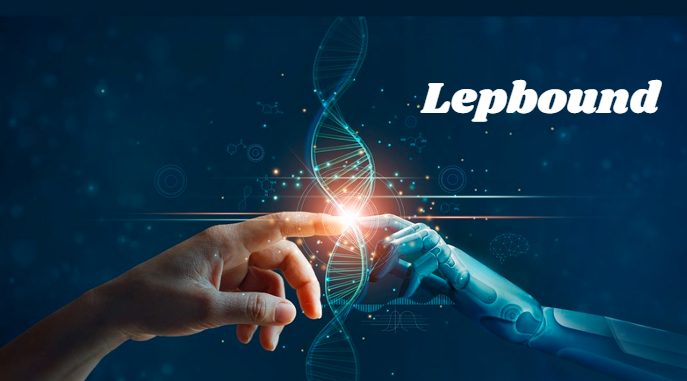Everything You Need to Know About Lepbound: A Comprehensive Guide

Lepbound is a relatively new term that has caught the attention of various industries and research sectors. Whether you are looking for insights into its origins, its applications, or how it impacts certain fields, this guide will cover everything you need to know. The term has stirred conversations, particularly in the context of technology, health, and lifestyle. But what exactly is Lepbound, and why is it becoming a key point of discussion?
In this article, we will explore the meaning of Lepbound, its relevance in modern contexts, and how it might affect various aspects of our daily lives. Whether you are a professional, a student, or just someone looking to learn more, this guide will provide comprehensive insights.
What is Lepbound?
Lepbound refers to a phenomenon that blends several fields of research, including technology, health, and behavior science. While the term itself is not yet universally recognized, it has found a niche in studies exploring how certain factors or actions influence human behavior and decision-making processes.
Lepbound is theorized to describe a state of being where individuals, systems, or organizations find themselves constrained or limited by certain circumstances, yet exhibit resilience and adaptability in overcoming these limits. It’s a concept that has implications in various fields, from artificial intelligence (AI) to personal health and beyond.
Origins and Theoretical Background of Lepbound
The origin of Lepbound can be traced to research on adaptability and constraint theory. It was first introduced in early psychological studies as a way to describe individuals or systems that function optimally under constraints. As technology evolved, the term was adapted to reflect the way both human beings and artificial systems interact within restricted environments.
As artificial intelligence and machine learning grew in popularity, the term “Lepbound” was adopted in the tech world to describe algorithms or AI models that perform better when operating under specific, controlled conditions. These systems are less prone to error and more effective when they are “bound” by certain parameters, rather than free to explore every possible solution.
Applications of Lepbound
One of the most fascinating applications of Lepbound is in the field of artificial intelligence. Researchers have identified that AI systems, when given specific boundaries or limits, tend to perform better and more efficiently. These systems are “bound” by the parameters set by their creators, yet their ability to adapt and function within those limits allows them to generate better outcomes.
For example, AI models used in self-driving cars are more reliable when they are restricted to specific road conditions, weather patterns, or driving rules. When AI is “Lepbound,” it may not be able to explore every possible outcome, but it can perform better in the scenarios it has been trained for.
In Personal Health and Lifestyle
In personal health, the concept of Lepbound can be applied to human resilience. People who face significant challenges, such as chronic illness or environmental stressors, often develop coping mechanisms that allow them to live a productive life despite the constraints. The idea of Lepbound here is about finding strength and making progress, even when external factors limit one’s potential.
An example might be someone who has to adhere to a strict dietary regimen due to health conditions but still manages to maintain an active lifestyle. This concept of resilience under constraint parallels the idea of an individual who, despite being “Lepbound” by certain factors, continues to thrive and adapt.
In Business and Organizational Development
Organizations that operate under economic, logistical, or regulatory constraints can also benefit from understanding the concept of Lepbound. By identifying key limits within their operational processes, businesses can structure themselves in ways that allow them to maximize performance without overextending resources.
For example, a company that must comply with stringent environmental regulations may focus on developing innovative solutions that not only comply with the law but also offer a competitive edge. This strategic adaptation to constraints is a real-world example of how the concept of Lepbound can be applied to business success.
How Lepbound Affects Decision Making
For individuals, Lepbound influences decision-making by narrowing down the possible options and focusing attention on the most relevant choices. When faced with too many options, people can experience decision fatigue. By creating boundaries or limits, Lepbound helps reduce the complexity of the decision-making process, which can lead to more efficient and effective outcomes.
For instance, when someone is choosing a new job, they may set boundaries on salary, location, or work-life balance. These parameters help them make a decision more quickly and with greater confidence.
Impact on Organizational Decisions
For organizations, the application of Lepbound in decision-making can streamline operations. When a company sets clear objectives and constraints, it can focus on strategic initiatives that are most likely to succeed within the given limits. This approach leads to more focused decision-making, with a higher likelihood of achieving desired outcomes.
In business, setting these boundaries can prevent unnecessary diversification that could lead to inefficiency. By focusing on core strengths and working within set parameters, companies can enhance their decision-making processes and improve overall performance.
The Future of Lepbound
As we look ahead, the concept of Lepbound may evolve further as technology and understanding of human behavior advance. One exciting area of potential is the intersection of Lepbound and emerging technologies like quantum computing and genetic engineering. As these fields grow, the constraints within which they operate will likely shift, and so will the way we define and understand Lepbound.
In the realm of artificial intelligence, we might see Lepbound as a critical factor in the development of autonomous systems. By understanding the boundaries and constraints that these systems need to operate within, developers can create AI that is not only smarter but also more ethically responsible and reliable.
Lepbound in Healthcare Innovations
Another field where Lepbound might play a pivotal role is in healthcare innovations. As medical treatments become more personalized, understanding how patients respond to various limitations or constraints could allow for better management of chronic conditions, mental health, and overall wellness. The idea of being “Lepbound” by one’s physical or mental state may shift from being a limiting factor to a strength, offering new pathways for health improvement.
Conclusion: Embracing the Potential of Lepbound
In conclusion, the concept of Lepbound opens up new avenues of thinking in various sectors. Whether in technology, health, business, or decision-making, understanding how constraints can foster resilience and adaptability is essential. As the term gains recognition, we will continue to see its application evolve, providing new solutions and strategies across industries.
While the full potential of Lepbound remains to be seen, one thing is clear: it offers a unique perspective on how limitations and challenges can be used to enhance performance, creativity, and success.



